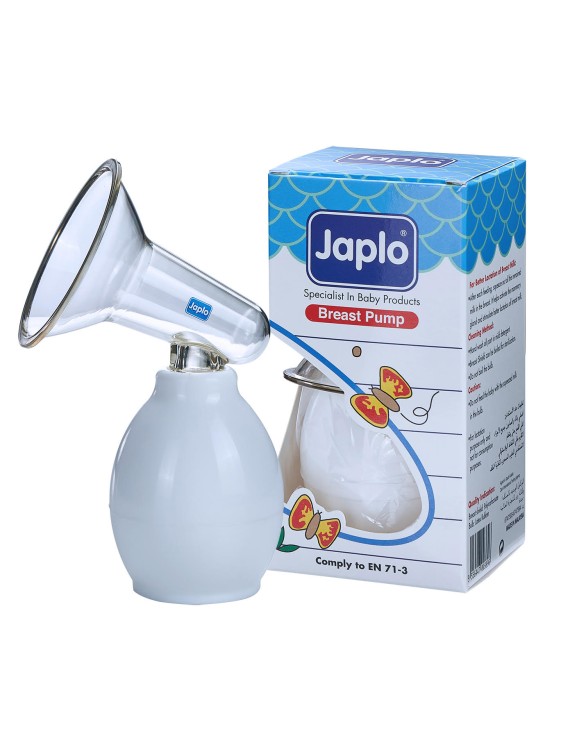JAPLO BREAST PUMP
JAPLO BREAST PUMP
- Brand:: Takaso Rubber Products Sdn Bhd
- Product Code: JAPLO BREAST PUMP
- Availability: In Stock
- RM 30.00
- Ex Tax: RM 30.00
After each feeding, squeeze out all the remained milk in breast.
It helps activate the mammary gland and stimulate better lactation of breast milk.
Specially designed for mother who practiced breast feeding.
Made of high quality polycarbonate.
-Manual Breast Pump
-PC
-Silicon
Manual Breast Pump for comfortable and easy expressing. -Manual operated pump. -Compact and ideal for travelling. -Easy to assemble, use and clean. -This set is packed in a durable container.
A breast pump is a mechanical device that lactating women use to extract milk from their breasts. They may be manual devices powered by hand or foot movements or automatic devices powered by electricity.
Breast pumps are used for many reasons.
Many parents use them to continue breastfeeding after they return to work. They express their milk at work, which is later bottle-fed to their child by a caregiver. This use of breast milk is widespread in the United States, where paid family leave is one of the shortest in the developed world. American historian Jill Lepore argues that the need for so-called "lactation rooms" and breast pumps is driven by the corporate desire for parents to return to work immediately rather than mothers' wishes or babies' needs.
A breast pump may also be used to stimulate lactation for women with a low milk supply or those who have not just given birth.
A breast pump may be also used to address a range of challenges parents may encounter breast feeding, including difficulties latching, separation from an infant in intensive care, to feed an infant who cannot extract sufficient milk itself from the breast, to avoid passing medication through breast milk to the baby, or to relieve engorgement, a painful condition whereby the breasts are overfull. Pumping may also be desirable to continue lactation and its associated hormones to aid in recovery from pregnancy even if the pumped milk is not used.
In a 2012 policy statement, the American Academy of Pediatrics recommended feeding preterm infants human milk, finding "significant short- and long-term beneficial effects," including lower rates of necrotizing enterocolitis (NEC). When infants are unable to suckle, mothers can pump if they wish their babies to be fed (via naso-gastric tube) with the mothers' own milk.
Expressing milk for donation is another use for breast pumps. Donor milk may be available from milk banks for babies who are not able to receive their mothers' milk.

